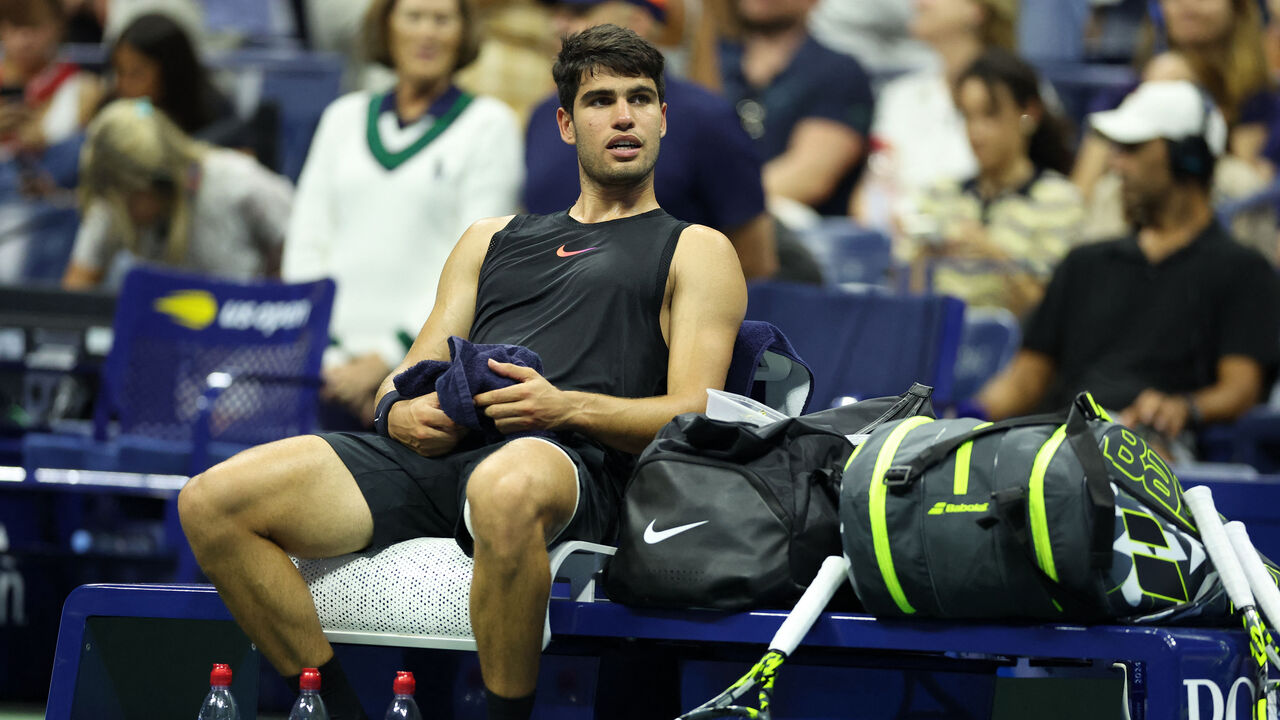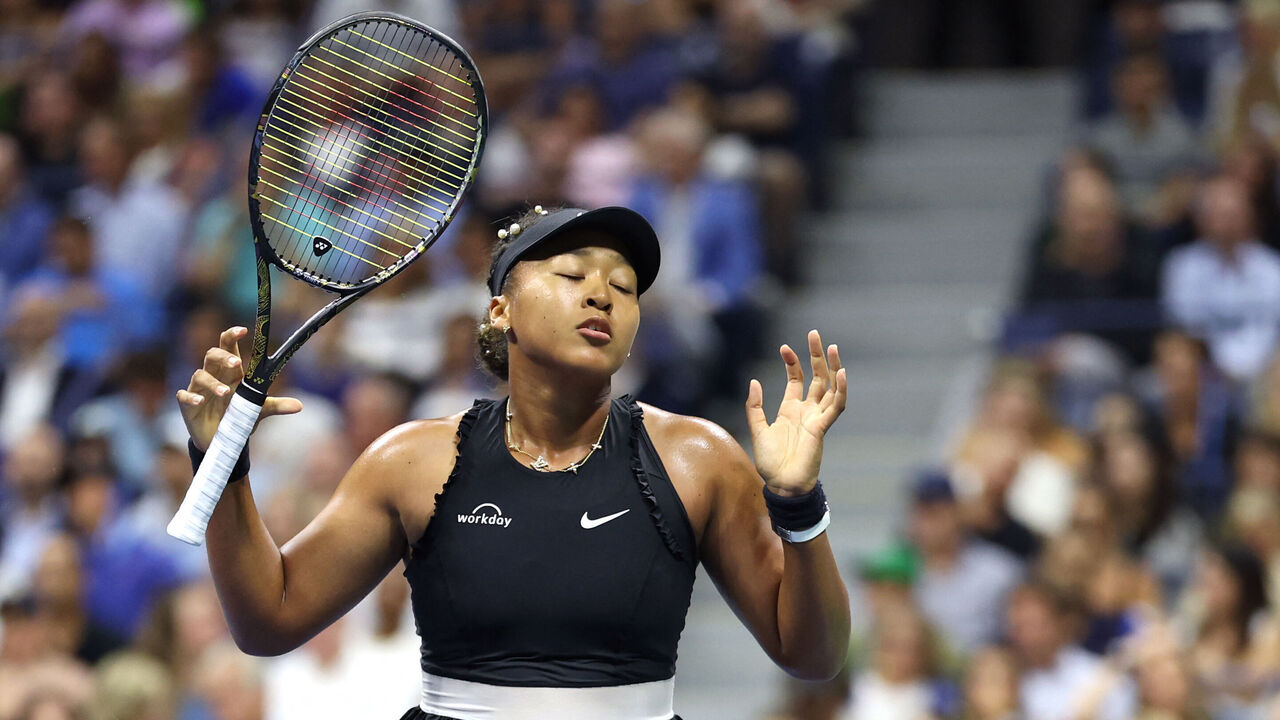US Open takeaways: Sinner, Sabalenka win 2nd majors of season
The Grand Slam tennis season ended just the way it started.
Jannik Sinner and Aryna Sabalenka were the last players standing in New York after kicking off the year with titles Down Under.
It's only the fifth time in history that the Australian Open singles winners both went on to capture the US Open in the same year, according to OptaAce.
Here are six takeaways from the US Open, including more on Sinner and Sabalenka.
Sinner extends American men's drought

Sinner capitalized on the early exits of Novak Djokovic and Carlos Alcaraz to take home his first US Open trophy. The top-ranked Italian was dominant during his championship run, dropping only two sets and winning 80% of his first-serve points. He led all players with 40 break points won, including six in the final against Taylor Fritz to help extend the American men's major drought to 22 years.
Sinner's consistency from the baseline is matched by few of his peers. The newly minted two-time major winner has no problems getting into long exchanges. The power and depth of his groundstrokes applies constant pressure to his opponents and frequently wears them down.
Sinner won 60 baseline points versus Fritz and 53.2% of such situations overall during the US Open, according to Craig O'Shannessy of the ATP Tour. Meanwhile, Sinner's adversaries had an average success rate of 38.6% from the baseline against him, adds O'Shannessy.
Sabalenka gets redemption

A year after falling short in the US Open final, Sabalenka refused to allow history to repeat itself. The 26-year-old fought off a stiff challenge from home favorite Jessica Pegula to claim her maiden title in New York and third career Grand Slam championship. Sabalenka became the fifth woman in the Open era to sweep the hard-court majors, per OptaAce.
Sabalenka's serve is among the most powerful weapons in the women's game. Not only is the Belarusian able to get free points off it, but she's often in great position to promptly end points whenever opponents get a racket on her serve. Her serve-plus-one was crucial versus Pegula, but it was just part of her formula for success.
Sabalenka hit 24 winners from her forehand side, which was on average faster than Sinner and Alcaraz, according to Eurosport. The World No. 2 showed that she can get the better of her counterparts in extended points as well, winning 12-of-15 rallies that went nine shots or more, per ESPN Stats & Info. Sabalenka played with a controlled aggression against Pegula, waiting for the right ball before stepping inside the baseline and finishing the point. Her finesse game was also on display, as she mixed in drop shots and showed great touch at the net on volleys.
Sabalenka has evolved to the point where she doesn't have to hit others off the court to win matches. That's a scary thought for the rest of the WTA tour, as her opponents are already having enough trouble dealing with her elite power.
Alcaraz, Djokovic run out of gas

Alcaraz and Djokovic each saw their Grand Slam season end much sooner than expected.
Alcaraz fell in the second round to Botic van de Zandschulp, who hadn't won back-to-back main-draw matches at the tour level all year. The Spaniard made 27 unforced errors versus the Dutchman, just a few nights after battling past qualifier Li Tu in four sets. Meanwhile, Djokovic went just one round further before losing to an in-form Alexei Popyrin. It was the 24-time major champion's earliest US Open exit since 2006 when he fell to Lleyton Hewitt, who just happened to be in Popyrin's player box. Djokovic's serve had been off all tournament, and he paid the price for it against the Aussie.
With Lorenzo Musetti also going down in the third round, all three medalists from the men's singles competition at the Paris Games were eliminated before the second week. Alcaraz admitted he probably didn't have "as much energy" after playing a heavy schedule that included Wimbledon and the Olympics within a one-month span. Djokovic, who had the exact same workload, echoed the sentiment following his stunning defeat.
"I spent a lot of energy winning the (Olympic) gold, and I did arrive to New York just not feeling fresh mentally and physically," Djokovic told reporters. "But because it's the US Open, I gave it a shot and I tried my best. I didn't have any physical issues. I just felt out of gas and you could see that with the way I played. From the very beginning ... I didn't find myself at all on this court."
Coco's serve lets her down

Gauff's serving woes have been documented all season, and they reared their ugly head again. The Florida native was unable to establish a rhythm during her title defense, getting just over half of her first serves in and tallying a tournament-leading 38 double faults. Her serving display against Emma Navarro in the round of 16 was the final nail in the coffin, as she hit 11 of her 19 double faults in the last set, including three in the third game to hand her countrywoman the decisive break.
Gauff's continuing struggles are partly a mental battle. The No. 3 seed knows she's got one of the fastest serves on tour, and her first instinct is to maximize that weapon. However, that mindset can lead to some stubbornness. She went for broke too many times against Navarro instead of taking off some pace to ensure the ball is in play.
Gauff's serving mechanics may also need to be completely revamped. The former top-ranked junior tried to tweak her ball toss throughout the season, but it's clear those adjustments aren't doing the trick. Gauff is open to any potential long-term solutions, including seeking help from a biomechanics trainer, which Sabalenka did a few years ago when she had been dealing with her own service yips.
"I definitely want to get other opinions. … I think it's sometimes more of an emotional, mental thing because if I go out on the practice court right now, I would make like 30 serves in a row. I've done it before," Gauff told reporters following her US Open elimination. "I think it's also just kind of a mental hurdle that I have to get over when it comes with that. But yeah, I definitely want to look at other things because I don't want to lose matches like this anymore."
Osaka still looking to recapture form

Another tournament, another mixed big of results for Naomi Osaka.
The Japanese star's US Open campaign started off with promise, as she dispatched Jelena Ostapenko in just 64 minutes for her first top-10 win in four years. It was a clinical performance reminiscent of Osaka's days atop the women's game. The four-time Grand Slam champ struck the ball cleanly and hit her spots with precision, tallying 19 winners and five unforced errors.
However, Osaka looked out of sorts two days later in her second-round matchup against Karolina Muchova. The former World No. 1 couldn't buy a first serve midway through the opening set, giving Muchova the opportunity to aggressively attack and seize control. Osaka raised her game in the second set and even had three consecutive chances to force a decider, but she made five forehand errors. The 26-year-old's decision-making was questionable at times, too, as she sent a number of swinging volleys wide to give away points at the net.
Osaka still has the weapons to challenge the best on any given day. She's got six top-20 wins this season. Climbing up to 75 in the rankings - just nine months back from maternity leave - is no small feat. But in order to seriously challenge for majors again, Osaka needs to start stringing wins together so that she can build confidence in her game and regain comfort in high-pressure situations.
Late-night madness
There's nothing in tennis quite like the atmosphere of a New York crowd under the lights at Arthur Ashe Stadium. Having said that, the lustre is largely lost when the second match of the doubleheader begins late in the evening and carries into the wee hours of the morning.
Sabalenka and Ekaterina Alexandrova didn't take the court for their third-round encounter until 12:08 a.m., setting a new record for the latest-starting match in US Open history. Qinwen Zheng and Donna Vekic took part in the latest women's tilt at the American Slam when their round-of-16 thriller ended at 2:15 a.m., while Alexander Zverev and Tomas Martin Etcheverry's third-round battle concluded at 2:35 a.m., just 15 minutes shy of the latest finish in tournament history.
The night isn't over when the match comes to a close. Players still have to conduct press conferences, cool down, and commute back to their hotels. That process can take a few hours. Those who wind up victorious are at a severe disadvantage for the next round. It's a longstanding problem that can no longer be ignored. Players shouldn't be put in such a tough position at the most important events on the calendar.
The tennis scheduling situation is a total mess. It looks so amateurish having matches going on at 2,3 4am👎 Sort it out @usopen @AustralianOpen @Wimbledon @rolandgarros @atptour @WTA @ITFTennis
— Andy Murray (@andy_murray) September 2, 2024
HEADLINES
- Alcaraz makes quick work of Norrie in Wimbledon quarterfinals
- Fritz beats Khachanov to reach his 1st semifinal at Wimbledon
- Injury denies Dimitrov potential upset win over No. 1 Sinner at Wimbledon
- Sinner cancels practice after hurting elbow in 4th-round match
- Wimbledon betting: Can Shelton, Fritz end 22-year Grand Slam drought?